Workplace Health & Safety Advice Note
This page is designed to provide a greater understanding of health and safety. To prevent potential confusion between advice on good practice and specific legal requirements, the word 'must' has been been used to highlight legal obligations.
The Workplace (Health, Safety and Welfare) Regulations 1992 came into force on 1 January 1993 and affect all workplaces (apart from construction sites and building operations) used for the first time after 31 December 1992 and all modifications, extensions and conversions started after that date. In workplaces existing before that date, these regulations took effect from 1 January 1996.
Fencing, Safety Rails and Fixed Ladders
Glass or Translucent Windows and Doors
Facilities for Rest and to Eat Meals
Ventilation
Every enclosed workplace must be ventilated by sufficient quantities of fresh or purified air. Windows, openings (not doors), or mechanical ventilation may be used but workers must not be exposed to draughts. No window skylight or ventilator should be in a position when open that will pose a health and safety risk to any person.
Temperature
During working hours the temperature in all workplaces inside buildings must be reasonable and provide reasonable comfort. The temperature should be at least 16°C. A thermometer must be available at a convenient distance from every part of the workplace.
Lighting
Every workplace must have suitable and sufficient lighting to enable people to work and move from place to place without eyestrain. Areas such as stairs or other places where there may be a risk of injury must be well lit so as to avoid shadows being cast. Emergency lighting should be provided in workrooms wherever a sudden loss of light would present a serious risk. Workstations must not be exposed to excessive heat or glare from lighting whether natural or artificial.
Cleanliness
Every workplace, its walls, ceilings and floors and its furniture and fittings shall be kept sufficiently clean and be capable of being kept clean. Floors and indoor traffic routes must be cleaned at least once a week while interior walls, ceilings and work surfaces should be cleaned at suitable intervals.
Room Dimensions
Every room where persons work shall have sufficient floor area, height and unoccupied free space for the purposes of health, safety and welfare. The minimum space per person is 11 cubic metres. For the purposes of calculation, any room with a ceiling height of over three metres shall be counted as no more than three metres. This minimum space requirement will not apply to such places as kiosks or attendants' shelters.
Work Stations and Seating
Work stations should be arranged to enable each task to be carried out safely and comfortably, while providing protection from adverse weather or conditions and have sufficient height and space to give freedom of movement. It should also have regard to any special needs of disabled persons.
Seating must be suitable for the person for whom it is provided and for the operation carried out at the work station. It must be the correct height and provide adequate support for the lower back. Where workers are unable to place their feet flat on the floor, a footrest should be provided.
Floors, Passages and Stairs
Floors should be of sound construction, have adequate strength and stability and be free from any hole, slope or uneven or slippery surface. Where the surface of a floor is likely to become wet it should have a slip resistant surface. Steep slopes likely to be used by a disabled persons should be provided with a secure handrail. Floors should be kept free of any obstruction particularly on or near stairs, steps or emergency routes. Any change of level that is not obvious should be clearly marked.
A secure and substantial handrail should be provided on every staircase. Handrails should be provided on both sides where there is a particular risk and down the centre where the staircase is particularly wide. Any open side of a staircase should also be securely fenced to a minimum standard of an upper rail at 900mm or higher and a lower rail at mid height.
Fencing, Safety Rails and Fixed Ladders
Secure fencing should be provided wherever possible at any place where a person might fall two metres or more and also where there is a risk of serious injury at less than this height. Fencing should consist of at least two guard rails: a top rail of at least 1100mm above ground level and a lower rail at mid height. These must be of adequate strength and stability to restrain any person or object falling against them. Where there is a risk to others from objects falling from the edge of a working platform then toe boards should be provided.
Covers, flaps, or hatchways must be capable of supporting any load which may pass over them.
Fixed ladders should be of sound construction, properly maintained and securely fixed. Rungs should be horizontal, give adequate foothold and not depend on nails, screws or similar fixings for their support. The stiles of the ladder should extend to at least 1100mm above any landing served by the ladder.
Fixed ladders installed after 31 December 1992 should have a landing or resting place every six metres and every six metre run should be out of line with the last to reduce the distance a person might fall. Where a ladder passes through a floor, the opening should be as small as possible. Any opening in a floor should be securely fenced and a gate provided as necessary. Where a fixed ladder is vertical and more than 2.5 metres high then safety hoops should be provided, beginning at the 2.5 metre mark and ending level with the top of the fencing on the floor served by the ladder. Hoops should not be more than 900mm apart.
Glass or Translucent Windows and Doors
Transparent or translucent surfaces should be of a safety material or be adequately protected against breakage (except in glasshouses) where any part of that surface is at shoulder level or below in doors, or waist level or below in windows, except where the windowpanes are less than 250mm wide. Safety materials are:
- materials which are inherently robust such as polycarbonates or glass block;
- glass which breaks safely (safety glass) or;
- ordinary annealed glass which meets the following thickness criteria:
| Thickness | Maximum Size |
|---|---|
| 8mm | 1.10m x 1.10m |
| 10mm | 2.25m x 2.25m |
| 12mm | 3.00m x 4.50m |
| 15mm | Any size |
Translucent panes not made of safety material should be adequately protected by screens or barriers to prevent persons falling against them. A large translucent surface should be marked to make it apparent.
Suitable provision should be made so that windows can be cleaned safely if they cannot be cleaned from the ground or other suitable surface. Suitable provision means:
- fitting windows which pivot to enable both surfaces to be cleaned from the inside
- fitting access equipment such as suspended cradles
- providing suitable conditions for the use of ladders up to nine metres long, such as a firm level surface. Suitable ladder attachment points should be provided for any ladder over six metres long
- providing suitably placed anchorage points such as eye bolts for safety harness
Traffic Routes
There must be sufficient routes of a suitable width and headroom to allow people on foot or in vehicles to circulate safely and without difficulty. Any restrictions or hazards should be clearly indicated with a suitable warning sign. Suitable speed limits may need to be set on vehicle routes. Speed retarders or road humps may also be used (not on routes used by forklift trucks).
Pedestrians should either be kept away from vehicle reversing areas or be provided with high visibility clothing. Where a load has to be tipped into a hopper, or similar place, then suitable wheel stops should be provided. Where vehicles pass through gates, tunnels, bridges or other enclosures then the pedestrian route should be separated by a kerb or barrier. Crossing points for pedestrians should be provided and used.
Loading bays should have at least one exit point from the lower level, wide bays should have two exit points or a refuge where pedestrians can go to avoid being struck or crushed by a vehicle. Any escalator or moving walkway should function safely, be equipped with any necessary safety device and be fitted with one or more emergency stop control which is easily identified and readily accessible.
Doors and Gates
Doors and gates should be suitably constructed and be fitted with any necessary safety device. Those which swing on both directions should be fitted with a vision panel unless they are low enough to see over. This would also apply to 'one way' doors on main traffic routes. Vision panels should be low enough for a person in a wheelchair to be seen from either side.
Sliding doors should have a stop to prevent the door coming off the track and also a retaining device to prevent it falling from its suspension should the rollers leave the track.
Upward opening doors should be fitted with a counter balance or ratchet mechanism to prevent it from falling.
Power operated doors and gates should have one or more of the following safety features:
- a sensitive edge or tripping device to stop or reverse the door should it become obstructed
- a device to limit the closing force making it insufficient to cause injury
- a manually operated control (only suitable where the door speed is slow and the risk of injury is low) where necessary, power operated doors should be fitted with an emergency stop button. Once the power is switched off it should be possible to open the doors manually (not including lift doors). Where tools are needed in an emergency then these should be readily available
Advice on the fire resistance of doors can be sought from the building control section of the local authority or the Fire Safety Service (01233 637277).
Drinking Water
An adequate supply of wholesome drinking water should be provided to all persons at work in the workplace. It shall be readily accessible and conspicuously marked where necessary to reasons of health and safety. Drinking water should be obtained from a tap connected directly to the water main (or a storage cistern which complies with UK water bylaws). It may only be provided in refillable containers where it cannot be obtained from a mains supply. Such containers should be enclosed to prevent contamination and refilled at least daily.
Drinking water should not be installed in places where contamination is likely such as in workshop or sanitary accommodation. Drinking cups should be provided and in the case of non-disposable cups then a facility for washing them should be provided nearby.
Accommodation for Clothing
Suitable and sufficient accommodation should be provided for any persons clothing which is not worn during working hours and for any special clotting which is worn at work but not taken home. The accommodation should enable the clothing to hang in a clean, warm, dry and well-ventilated space. A separate hook or peg should be provided for each worker. Where work clothing become dirty, damp or contaminated, it should be accommodated separately from the workers' own clothing.
In those cases where a person has to wear special clothing and where, for reasons of health or propriety, they cannot be expected to change in another room then a changing room should be provided. Such rooms should be large enough to contain the maximum number or persons without overcrowding, and should be so arranged to ensure the privacy of the user. Adequate seating should be provided. The changing room should communicate directly with clothing accommodation and showers (if provided).
Facilities for Rest and to Eat Meals
Suitable and sufficient rest facilities should be provided at readily accessible places. In offices or other reasonably clean workplaces the work seats will sufficient providing that the workers are not exposed to excessive disturbance and there is suitable surface on which to place the food if necessary. In other areas, separate rest areas should be provided. Rest areas or rooms should be large enough to have sufficient seats (with backrests) and tables for the number of workers likely to use them at any one time.
Eating facilities should include facilities for workers to obtain a hot drink, such as an electric kettle, vending machine or canteen. Where hot food cannot be obtained in or reasonably near to the workplace then facilities should be provided for a means of heating their own food. Eating facilities should be kept clean and suitable hygienic standards maintained.
Rest facilities used by pregnant women and nursing mothers should be conveniently situated in relation to sanitary facilities and where necessary, include the facility to lie down.
If you require any further advice please email envhealth@ashford.gov.uk.






